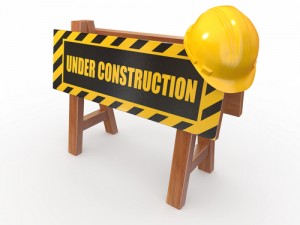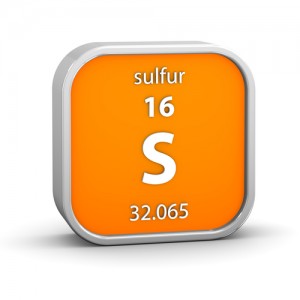Building construction frequently generates silica dust, a substance that can cause lung disease and other respiratory problems. Abrasive sand-blasting or jack hammering as well as concrete drilling and block cutting can lead to its release. In Broome Cty. v. Travelers Indem. Co., – N.Y.S.2d –, 125 A.D.3d 1241, 2015 WL 790256, 2015 N.Y.App.Div. LEXIS 1706 (N.Y.App.Div., Feb. 26, 2015), a unanimous panel from New York’s intermediate level appellate court held that the pollution and faulty workmanship exclusions in a first-party policy barred coverage for the property damage when silica dust spread throughout an office building due to construction activities nearby.
 The insured was Broome County, the owner of a building in a government complex. During the construction of a parking garage below the structure, silica dust migrated up an elevator shaft and disbursed throughout all floors of the building. It was undisputed that inadequate dust barriers were what allowed the silica to infiltrate the shaft – it was “a flawed process on the part of the contractors that led to the loss at issue.” Broome County made claim for the resulting property damage, but its insurer, Travelers Indemnity, denied the claim, invoking the two exclusions discussed above.
The insured was Broome County, the owner of a building in a government complex. During the construction of a parking garage below the structure, silica dust migrated up an elevator shaft and disbursed throughout all floors of the building. It was undisputed that inadequate dust barriers were what allowed the silica to infiltrate the shaft – it was “a flawed process on the part of the contractors that led to the loss at issue.” Broome County made claim for the resulting property damage, but its insurer, Travelers Indemnity, denied the claim, invoking the two exclusions discussed above.
After litigation ensued, the trial court denied Travelers’ motion to dismiss, finding that the pollution exclusion did not operate to bar coverage and that there were factual issues with respect to whether the faulty workmanship exclusion did so. An appeal followed. Read more ›

 The insureds, Frederick and Mary Platek, owned a home in Hamberg, New York. On September 7, 2010, a subsurface water main abutting their property ruptured, flooding the house’s finished basement and causing $110,000 in damages. The Platek’s insurance claim was denied by Allstate, their homeowner’s insurer, because the policy contained an exclusion reciting that Allstate “does not cover loss to the property . . . consisting of or caused by . . . 4. Water . . . on or below the surface of the ground, regardless of its source[, including] water . . . which exerts pressure on, or flows, seeps or leaks through any part of the residents premises.”
The insureds, Frederick and Mary Platek, owned a home in Hamberg, New York. On September 7, 2010, a subsurface water main abutting their property ruptured, flooding the house’s finished basement and causing $110,000 in damages. The Platek’s insurance claim was denied by Allstate, their homeowner’s insurer, because the policy contained an exclusion reciting that Allstate “does not cover loss to the property . . . consisting of or caused by . . . 4. Water . . . on or below the surface of the ground, regardless of its source[, including] water . . . which exerts pressure on, or flows, seeps or leaks through any part of the residents premises.” In 2005, Kasey McDermott purchased a home in Bay City, Michigan and secured homeowner’s coverage from Nationwide. Five years later in 2010, her then-husband Brien Matthews became a licensed medical marijuana patient and caregiver pursuant to Michigan law, and he set up a marijuana growing and processing operation in two rooms in the basement. The area was previously used only for storage and for the couple’s washer and dryer. By January of 2012, Matthews was servicing the needs of four patients, including himself.
In 2005, Kasey McDermott purchased a home in Bay City, Michigan and secured homeowner’s coverage from Nationwide. Five years later in 2010, her then-husband Brien Matthews became a licensed medical marijuana patient and caregiver pursuant to Michigan law, and he set up a marijuana growing and processing operation in two rooms in the basement. The area was previously used only for storage and for the couple’s washer and dryer. By January of 2012, Matthews was servicing the needs of four patients, including himself. Earlier this month a unanimous Florida appellate court joined a number of other states that have held that an all-risk policy exclusion for vandalism and malicious mischief operates to bar coverage for an arson loss. The opinion can be found at
Earlier this month a unanimous Florida appellate court joined a number of other states that have held that an all-risk policy exclusion for vandalism and malicious mischief operates to bar coverage for an arson loss. The opinion can be found at  The case arose after Tri-Union Seafoods initiated a recall in response to the U.S. Food and Drug Administration (FDA) warning about potential contamination. The policyholder’s claim was denied by its product contamination carrier, Starr Surplus Lines, and Tri-Union then filed suit in federal court in California, where it was headquartered and incorporated. Starr’s response was a motion to dismiss based on the contract of insurance’s forum selection clause and/or to transfer to New York pursuant to 28 U.S.C. § 1404(a).
The case arose after Tri-Union Seafoods initiated a recall in response to the U.S. Food and Drug Administration (FDA) warning about potential contamination. The policyholder’s claim was denied by its product contamination carrier, Starr Surplus Lines, and Tri-Union then filed suit in federal court in California, where it was headquartered and incorporated. Starr’s response was a motion to dismiss based on the contract of insurance’s forum selection clause and/or to transfer to New York pursuant to 28 U.S.C. § 1404(a). Petrey was a wholesale distributor of goods supplied to convenience stores, one of which was a two ounce “energy shot” drink called “5-Hour Energy.” It hired salespeople for delivery routes, and each of them leased a Petrey storage unit. The salespeople ordered inventory from Petrey’s warehouse, and the insured then delivered the goods to the storage unit for distribution.
Petrey was a wholesale distributor of goods supplied to convenience stores, one of which was a two ounce “energy shot” drink called “5-Hour Energy.” It hired salespeople for delivery routes, and each of them leased a Petrey storage unit. The salespeople ordered inventory from Petrey’s warehouse, and the insured then delivered the goods to the storage unit for distribution. The policyholder made claim after the heating, ventilating, and air-conditioning (HVAC) systems in five townhouses at its Creek’s Edge at Stoney Point Townhomes complex in Richmond broke down due to off-gassing from the drywall. Its property insurance carrier, Nationwide Mutual, responded by filing a declaratory judgment action asking the court to hold that it had no obligation to cover the claims. Stony Point conceded that it had no coverage under the main body of the contract of insurance in the wake of Travco, but it contended that the damage to the HVAC units was covered by an Additional Coverage for “Equipment Breakdown.” This recited that Nationwide “will pay for loss caused by or resulting from an ‘accident’ to ‘covered equipment.’ “ The provision also afforded coverage for “the additional cost to repair or replace Covered Property because of contamination by a ‘hazardous substance.’ “
The policyholder made claim after the heating, ventilating, and air-conditioning (HVAC) systems in five townhouses at its Creek’s Edge at Stoney Point Townhomes complex in Richmond broke down due to off-gassing from the drywall. Its property insurance carrier, Nationwide Mutual, responded by filing a declaratory judgment action asking the court to hold that it had no obligation to cover the claims. Stony Point conceded that it had no coverage under the main body of the contract of insurance in the wake of Travco, but it contended that the damage to the HVAC units was covered by an Additional Coverage for “Equipment Breakdown.” This recited that Nationwide “will pay for loss caused by or resulting from an ‘accident’ to ‘covered equipment.’ “ The provision also afforded coverage for “the additional cost to repair or replace Covered Property because of contamination by a ‘hazardous substance.’ “  In
In  Maria Nucci filed a personal injury action against Target, alleging that she fell on “a foreign substance” on the floor of one of the defendant’s stores. Her complaint contended that she sustained permanent injuries, aggravated pre-existing ones, and also experienced lost earnings and emotional pain and suffering. Prior to her deposition, Target’s attorneys reviewed her Facebook profile and found that it contained 1,285 photographs. She was questioned about some of them at the deposition itself, and she promptly took three dozen of the pictures down.
Maria Nucci filed a personal injury action against Target, alleging that she fell on “a foreign substance” on the floor of one of the defendant’s stores. Her complaint contended that she sustained permanent injuries, aggravated pre-existing ones, and also experienced lost earnings and emotional pain and suffering. Prior to her deposition, Target’s attorneys reviewed her Facebook profile and found that it contained 1,285 photographs. She was questioned about some of them at the deposition itself, and she promptly took three dozen of the pictures down. The policyholders owned a gas station and convenience store in Cherry Hill, New Jersey. The structure experienced moderate damage during a storm on August 14, 2011. Two weeks later on August 28th, the rear portion of the building collapsed during Hurricane Irene. There was a 72” corrugated metal culvert running underground near the rear of the structure, and this was corroded and decayed. Experts for both sides agreed that the deteriorated culvert sustained damage during the first storm and then partially collapsed after Irene, leading to extensive soil erosion; when the insurer’s expert examined the property two days after the storm, there was a hole 60’ long, 20’ wide, and 8’ deep behind the building.
The policyholders owned a gas station and convenience store in Cherry Hill, New Jersey. The structure experienced moderate damage during a storm on August 14, 2011. Two weeks later on August 28th, the rear portion of the building collapsed during Hurricane Irene. There was a 72” corrugated metal culvert running underground near the rear of the structure, and this was corroded and decayed. Experts for both sides agreed that the deteriorated culvert sustained damage during the first storm and then partially collapsed after Irene, leading to extensive soil erosion; when the insurer’s expert examined the property two days after the storm, there was a hole 60’ long, 20’ wide, and 8’ deep behind the building.